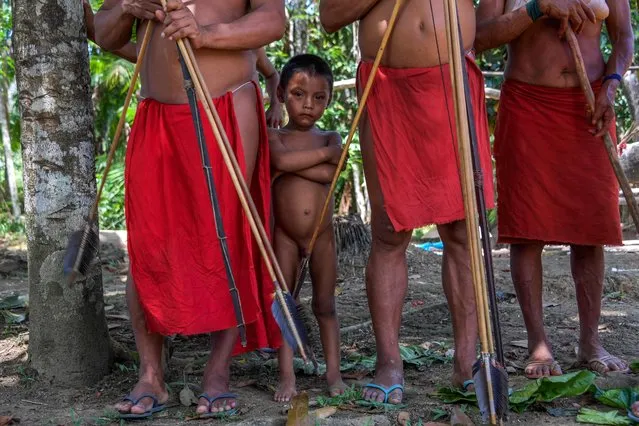
A Waiapi boy stands behind adults at the Pinoty village in Waiapi indigenous reserve in Amapa state in Brazil on October 12, 2017. They appear silently, seemingly from nowhere: a dozen figures, naked except for bright red loincloths, blocking the dirt road. These are the Waiapi, an ancient tribe living in Brazil's Amazon rainforest but now fearing invasion by international mining companies. Leading AFP reporters to a tiny settlement of palm-thatched huts hidden in foliage, the tribesmen streaked in red and black dye vow to defend their territory. They brandish six-foot (two-meter) bows and arrows to reinforce the point. “We'll keep fighting”, says Tapayona Waiapi, 36, in the settlement called Pinoty. “When the companies come we'll keep resisting. If the Brazilian government sends soldiers to kill people, we'll keep resisting until the last of us is dead”. The Waiapi indigenous reserve is in pristine rainforest near the eastern end of the Amazon river. It is part of a much larger conservation zone called Renca, covering an area the size of Switzerland. Surrounded by rivers and towering trees, the tribe operates almost entirely according to its own laws, with a way of life at times closer to the Stone Age than the 21st century. Yet modern Brazil is barely a few hours' drive away. And now the center-right government is pushing to open Renca to international mining companies who covet the rich deposits of gold and other metals hidden under the sea of green. (Photo by Apu Gomes/AFP Photo)

A Waiapi man walks on the road in the Waiapi indigenous reserve in Amapa state in Brazil on October 15, 2017. Tribal chieftain Tzako Waiapi perfectly remembers the day almost half a century ago when his hunting party stumbled across a group of white adventurers in the Amazon rainforest. Within months, nearly everyone in his entire tribe had died from disease. (Photo by Apu Gomes/AFP Photo)
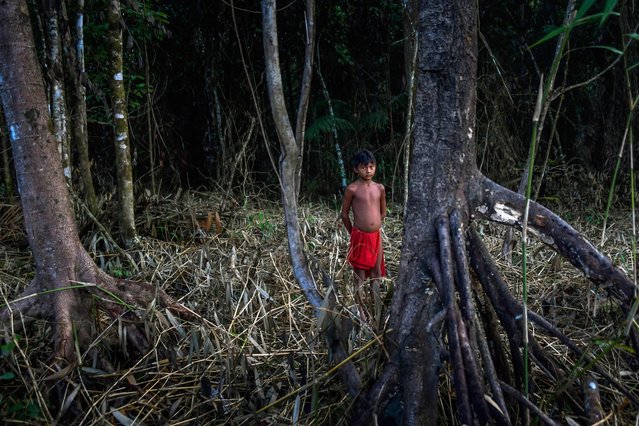
A Waiapi boy stands in the jungles while looking for wood for a fire pit at the Manilha village in the Waiapi indigenous reserve in Amapa state in Brazil on October 13, 2017. (Photo by Apu Gomes/AFP Photo)
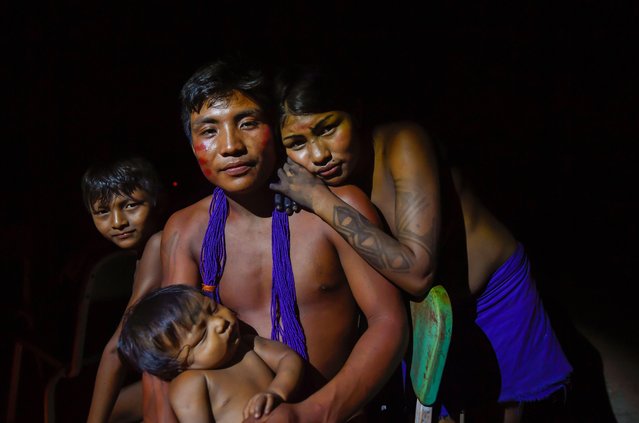
A Waiapi family poses for a picture in Waiapi indigenous reserve in Amapa state in Brazil on October 14, 2017. (Photo by Apu Gomes/AFP Photo)
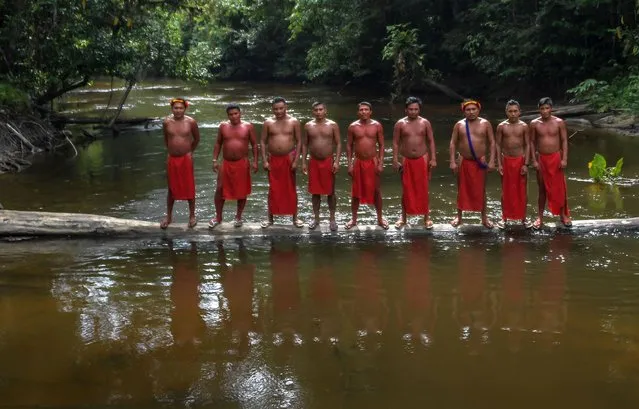
Waiapi men stand at the Tucunapi river in the Waiapi indigenous reserve in Amapa state in Brazil on October 14, 2017. (Photo by Apu Gomes/AFP Photo)

Waiapi children walk under the rain at the Manilha village, in the indigenous reserve Waiapi in Amapa state in Brazil on October 12, 2017. (Photo by Apu Gomes/AFP Photo)
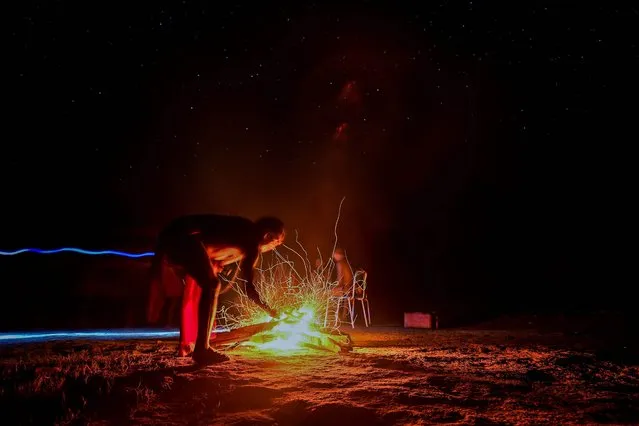
Chieftain Akaupotyr Waiapi sets up a bonfire at the Manilha village in Waiapi indigenous reserve in Amapa state in Brazil on October 12, 2017. (Photo by Apu Gomes/AFP Photo)
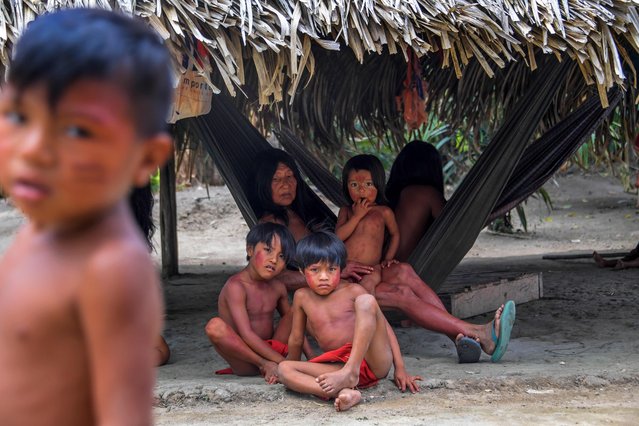
Waiapi tribe members at the Manilha village in the Waiapi indigenous reserve in Amapa state in Brazil on October 14, 2017. (Photo by Apu Gomes/AFP Photo)
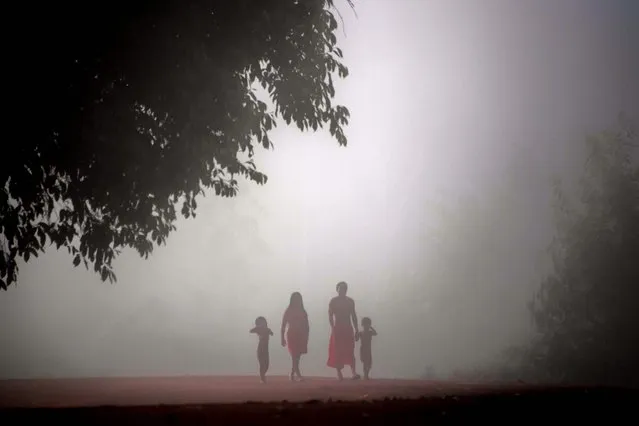
Jawaruwa Waiapi and his family walk amidst fog, early in the morning, at the Manilha village in the Waiapi indigenous reserve in Amapa state in Brazil on October 13, 2017. (Photo by Apu Gomes/AFP Photo)

Waiapi men into the jungle in the Waiapi indigenous reserve in Amapa state in Brazil on October 14, 2017. (Photo by Apu Gomes/AFP Photo)

Meri Waiapi bathes with her cousin at the Feliz river in the Waiapi indigenous reserve in Amapa state in Brazil on October 14, 2017. (Photo by Apu Gomes/AFP Photo)
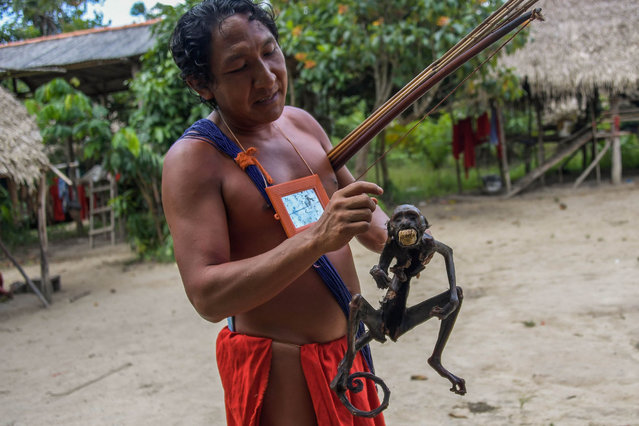
Chieftain Japarupi Waiapi shows a roasted monkey -part of Waiapi's diet, also based in Manioc and fruits- at the reserve in Amapa state in Brazil on October 13, 2017. When Waiapis walks into the Amazon forest surrounding their village, they do not see trees, but a kind of shopping mall providing medicine, food, shelter, tools and weapons all under the eye of multiple spirits. (Photo by Apu Gomes/AFP Photo)
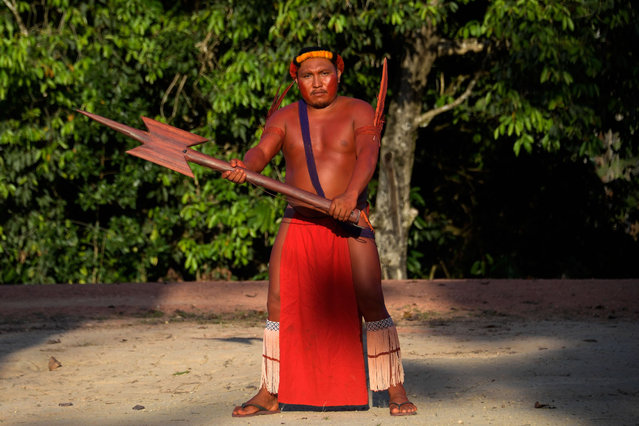
A Waiapi man poses for a picture with his wooden Borduna during the Anaconda's party -during which they make flutes to play and dance, and at the end leave all flutes on the river for the Anaconda snake to protect their village- in the Waiapi indigenous reserve in Amapa state in Brazil on October 14, 2017. (Photo by Apu Gomes/AFP Photo)
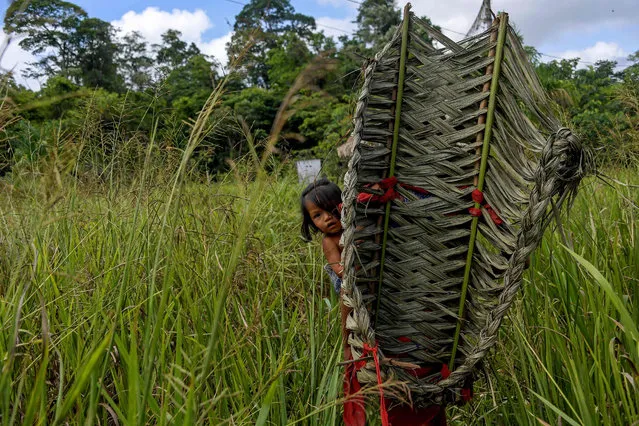
A Waiapi girl is seen with her mother at a manioc's field, while harvesting to prepare Caxiri, a craft beer made with Manioc, imbibed daily by men, women and children when is not yet sour yet, at the Waiapi indigenous reserve in Amapa state in Brazil on October 13, 2017. (Photo by Apu Gomes/AFP Photo)
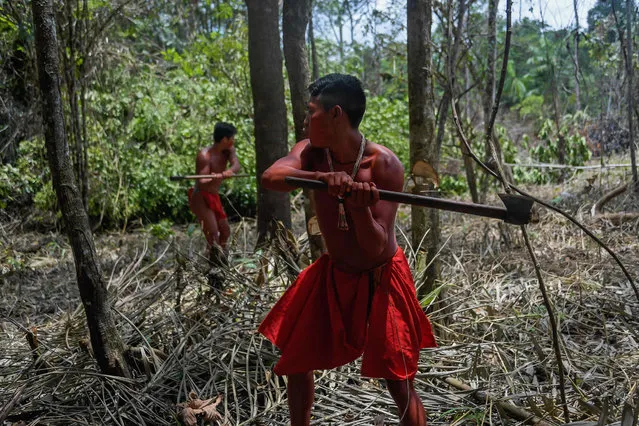
Waiapi men cut down trees to make manioc field, at the Waiapi indigenous reserve in Amapa state in Brazil on October 14, 2017. (Photo by Apu Gomes/AFP Photo)
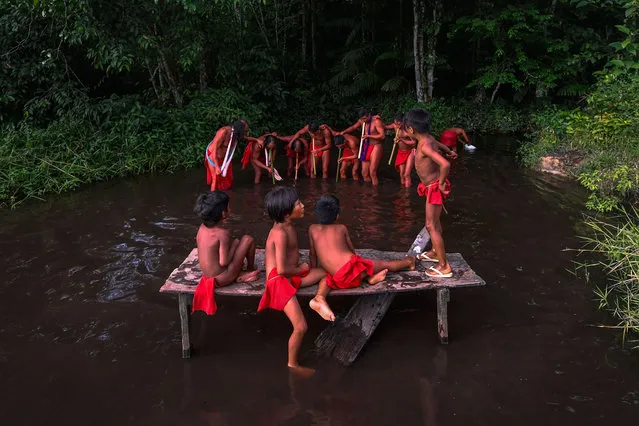
Waiapi men dance and play flute during the Anaconda's party -during which they make flutes to play and dance, and at the end leave all flutes on the river for the Anaconda snake to protect their village- in the Waiapi indigenous reserve in Amapa state in Brazil on October 14, 2017. (Photo by Apu Gomes/AFP Photo)

A Waiapi man runs after cutting down a tree to make a manioc field, at the Waiapi indigenous reserve in Amapa state in Brazil on October 14, 2017. (Photo by Apu Gomes/AFP Photo)
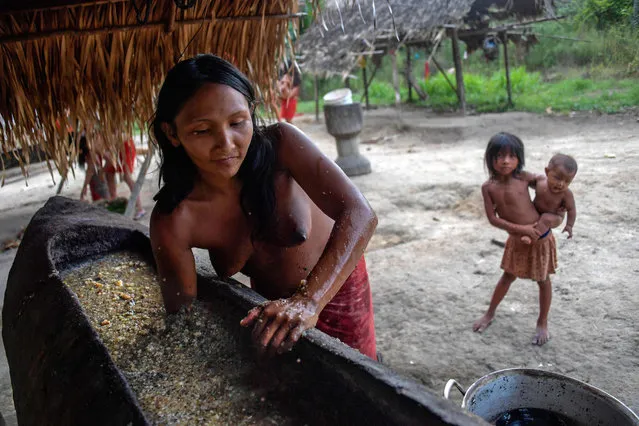
A Waiapi woman mixes water and manioc to prepare Caxiri, a craft beer made with Manioc, imbibed daily by men, women and children when is not sour yet, at the indigenous reserve Waiapi on the Manilha village in Amapa state in Brazil on October 13, 2017. (Photo by Apu Gomes/AFP Photo)
27 Oct 2017 08:39:00,
post received
0 comments
